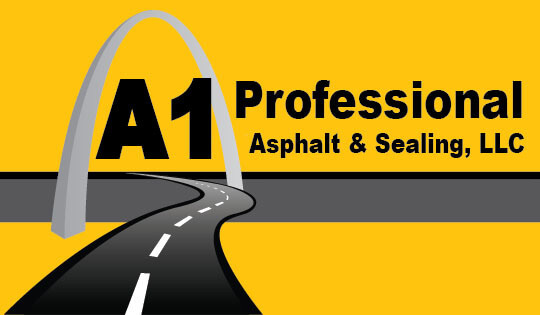A1 Professional Asphalt & Sealing Llc Can Be Fun For Everyone
Table of ContentsHow A1 Professional Asphalt & Sealing Llc can Save You Time, Stress, and Money.Some Of A1 Professional Asphalt & Sealing LlcHow A1 Professional Asphalt & Sealing Llc can Save You Time, Stress, and Money.A1 Professional Asphalt & Sealing Llc - The FactsSome Ideas on A1 Professional Asphalt & Sealing Llc You Need To Know

The oil in a car engine is not simply oil. It consists of a variety of ingredients to improve the vehicle's performance. These include polymers, thickness modifiers, warm stabilizers, added lubes, and put on ingredients. The REOB has all the additives that were in the waste oil along with the wear steels from the engine (primarily iron and copper).
By making several blends using various REOB samples and various asphalt binders, the variations mainly can be balanced out. Several States gave examples of well-known REOB composition to TFHRC scientists, who examined the examples to contrast the percentage of added (known) REOB to the located (examined) amount. The analyses revealed a comparable percentage of added and found REOB.
The Single Strategy To Use For A1 Professional Asphalt & Sealing Llc
None of those States understood that the asphalt they were purchasing contained REOB. One State urged its samples had no REOB - https://www.gaiaonline.com/profiles/a1asphaltseal/46656807/.
Of the 1,532 samples checked, 12 percent consisted of REOB, and some included substantially high degrees of it at 1020 percent. The greatest level was 34 percent in a sample from Texas, which TxDOT had actually utilized in a patching compound. This screening also disclosed the existence of phosphoric acid in 11 percent of the samples, and 2 percent included ground tire rubber.
Two years ago at TRB's yearly conference, the Federal scientists held an REOB workshop and presented the findings of their laboratory assessments to a standing room-only crowd. Some firms do not particularly outlaw REOB, they do impose physical examinations that preclude its useeffectively a ban. Others do not ban it by spec, yet have arrangements with asphalt providers to stay clear of using REOB
Our A1 Professional Asphalt & Sealing Llc Statements
A handful do allow REOB, some within specific restrictions. Ohio and Texas limitation degrees to much less than 5 percent of the asphalt. To create a dependable test technique that all States can utilize, the TFHRC researchers established a round-robin examination strategy. The participants are 11 State highway companies (Illinois, Massachusetts, Minnesota, Mississippi, Montana, North Carolina, Oklahoma, South Carolina, Texas, Vermont, and Wyoming), 2 independent testing laboratories, the Ministry of Transportation in Ontario, Queen's College in Ontario, and an Ontario paving specialist.
In overall, the researchers prepared and shipped 720 blends. The participants are evaluating the samples individually making use of the standards provided by the TFHRC researchers. The round-robin screening is virtually finished, and TFHRC remains in the procedure of collecting the outcomes. The outcome will be a suggested AASHTO test technique that any kind of State can adopt and make use of (cold mix vs hot mix asphalt).
The pavement with REOB, which is located 0.6 mile (1 kilometer) from the sidewalk without REOB, has similar subgrade, traffic density, and environment. The section of Highway655 with 5 to 10 percent REOB revealed considerable breaking. In this instance, the existence of REOB was the determined cause of splitting at a reduced temperatures.
"In our experience in Canada, also tiny quantities of 23 percent can be a problem." Likewise, a section of examination pavement in Minnesota (MN1-4) located to you could check here consist of REOB also split prematurely. The sidewalk carried out well for the initial 3 to 4 years, yet after that began to break. This sidewalk is also subject to reduced temperature levels.
Unknown Facts About A1 Professional Asphalt & Sealing Llc
The examinations were not extensive, yet they showed that at degrees of 6 percent or even more, the tensile toughness of the asphalt went down significantly. At a degree of 3.5 percent REOB, the variation in the physical test methods was higher than the effect of REOB. It was difficult for scientists to analyze whether REOB was existing. https://www.metal-archives.com/users/a1asphaltseal.

One binder parameter considered is the difference in between the reduced temperature level critical specification temperature for rigidity (S) in the flexing light beam rheometer and the flexing beam of light rheometer creep slope (m-value) noted as Tcritical. TC = TC (S) TC (m-value). Assessment of this specification is still ongoing. 2 independent research teams, one from AASHTO and the various other from the Asphalt Institute, ended that even more research study is required on making use of REOB in asphalt.
Previously, all asphalt screening measured design homes such as rigidity. These tests do not reveal what materials had actually been added to the asphalt.

Top Guidelines Of A1 Professional Asphalt & Sealing Llc
These outcomes show there are weak points in the standardized engineering testing methods that may be exploited. The producer may have an economic benefit and the item passes all the standard tests, however the product may not be advantageous to guaranteeing long-lasting performance. To resolve this concern and the growth of new asphalt additives and extenders, TFHRC is beginning a study program to make use of portable spectroscopic gadgets, x-ray fluorescence spectroscopy, and Fourier transform infrared spectroscopy to allow evaluations to be performed in the field as opposed to having to take examples back to the laboratory.